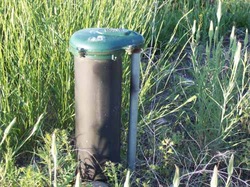Sodium Chloride is what is usually known as salt. A salt generator works in a way that it applies a process of electrolysis to the dissolved salt. This happens as the water passes through a pool's filter system. What the electrolysis does is that it separates the sodium from the salt and leaves the chloride part or rather the chlorine.
The chlorine left is usually very natural. This means that it does not have the natural byproducts found with the other types of chlorine. It does not have a strong odor and also does not turn people's eyes red when they swim. In this article, we are going to discuss all the benefits of a salt water system and of course its disadvantages.
For pool owners, this system is good since the chlorine is produced and dispersed into the pool consistently. This makes it difficult for the pool water to develop algae or get cloudy. The maintenance of the swimming pool also gets easier with the consistency in the chlorine levels. How? In that, a person does not need to keep on checking the chlorine levels or keep on adding of chlorine tablets.
Most individuals who own pools have been able to see the importance. This can be observed where the swimmers do not complain about the particular pool. Beside the advantages of the chlorine, there are also a few disadvantages.
The salt water generators make chlorine through an "electrólisis salina" a process that converts salt to chlorine. All in all, these salt generators are not the best option you can choose to ensure your swimming pool stays clean. You cannot be sure that a pool will be free from bacteria, algae, dust, pollen, viruses, and skin oils and lotions. We have more information on electrólisis salina for you. Join us for this.
Chlorine free and chemical free cleaning are other good methods of cleaning available. There are more skin and environment friendly processes which are the Ionic water purification systems, and natural oxidation processes. They are much better than the salt.
The chlorine that is usually released into the swimming pool from the salt generators can be very corrosive. Not only can it be corrosive but also detrimental to the pool equipment. The internal and external components of a pool can be damaged from the abrasive chemical effects of both salt and chlorine.
Chlorine has been linked to a number of diseases in human beings. It has been proven to trigger Asthma reactions, especially in children, linked also to the rectal and bladder cancers and heart disease. When a person immerses his or her body in a pool, he or she opens up the body for several ill health effects. The chlorine can get into your skin through the skin's surface and also you can ingest internally by swallowing the pools water accidentally.
With salt water generators using chlorine as a killer of bacteria and algae, it also dries out your skin. Chlorine can also burn your throat and lungs when you breathe in chlorine fumes. It is advisable when you exit the pool, you should take a shower and rinse off the possible contaminants away from your body.
With all these negative problems brought about by using chemicals to clean your pool, why don't you use the other natural alternativ
The chlorine left is usually very natural. This means that it does not have the natural byproducts found with the other types of chlorine. It does not have a strong odor and also does not turn people's eyes red when they swim. In this article, we are going to discuss all the benefits of a salt water system and of course its disadvantages.
For pool owners, this system is good since the chlorine is produced and dispersed into the pool consistently. This makes it difficult for the pool water to develop algae or get cloudy. The maintenance of the swimming pool also gets easier with the consistency in the chlorine levels. How? In that, a person does not need to keep on checking the chlorine levels or keep on adding of chlorine tablets.
Most individuals who own pools have been able to see the importance. This can be observed where the swimmers do not complain about the particular pool. Beside the advantages of the chlorine, there are also a few disadvantages.
The salt water generators make chlorine through an "electrólisis salina" a process that converts salt to chlorine. All in all, these salt generators are not the best option you can choose to ensure your swimming pool stays clean. You cannot be sure that a pool will be free from bacteria, algae, dust, pollen, viruses, and skin oils and lotions. We have more information on electrólisis salina for you. Join us for this.
Chlorine free and chemical free cleaning are other good methods of cleaning available. There are more skin and environment friendly processes which are the Ionic water purification systems, and natural oxidation processes. They are much better than the salt.
The chlorine that is usually released into the swimming pool from the salt generators can be very corrosive. Not only can it be corrosive but also detrimental to the pool equipment. The internal and external components of a pool can be damaged from the abrasive chemical effects of both salt and chlorine.
Chlorine has been linked to a number of diseases in human beings. It has been proven to trigger Asthma reactions, especially in children, linked also to the rectal and bladder cancers and heart disease. When a person immerses his or her body in a pool, he or she opens up the body for several ill health effects. The chlorine can get into your skin through the skin's surface and also you can ingest internally by swallowing the pools water accidentally.
With salt water generators using chlorine as a killer of bacteria and algae, it also dries out your skin. Chlorine can also burn your throat and lungs when you breathe in chlorine fumes. It is advisable when you exit the pool, you should take a shower and rinse off the possible contaminants away from your body.
With all these negative problems brought about by using chemicals to clean your pool, why don't you use the other natural alternativ


 RSS Feed
RSS Feed